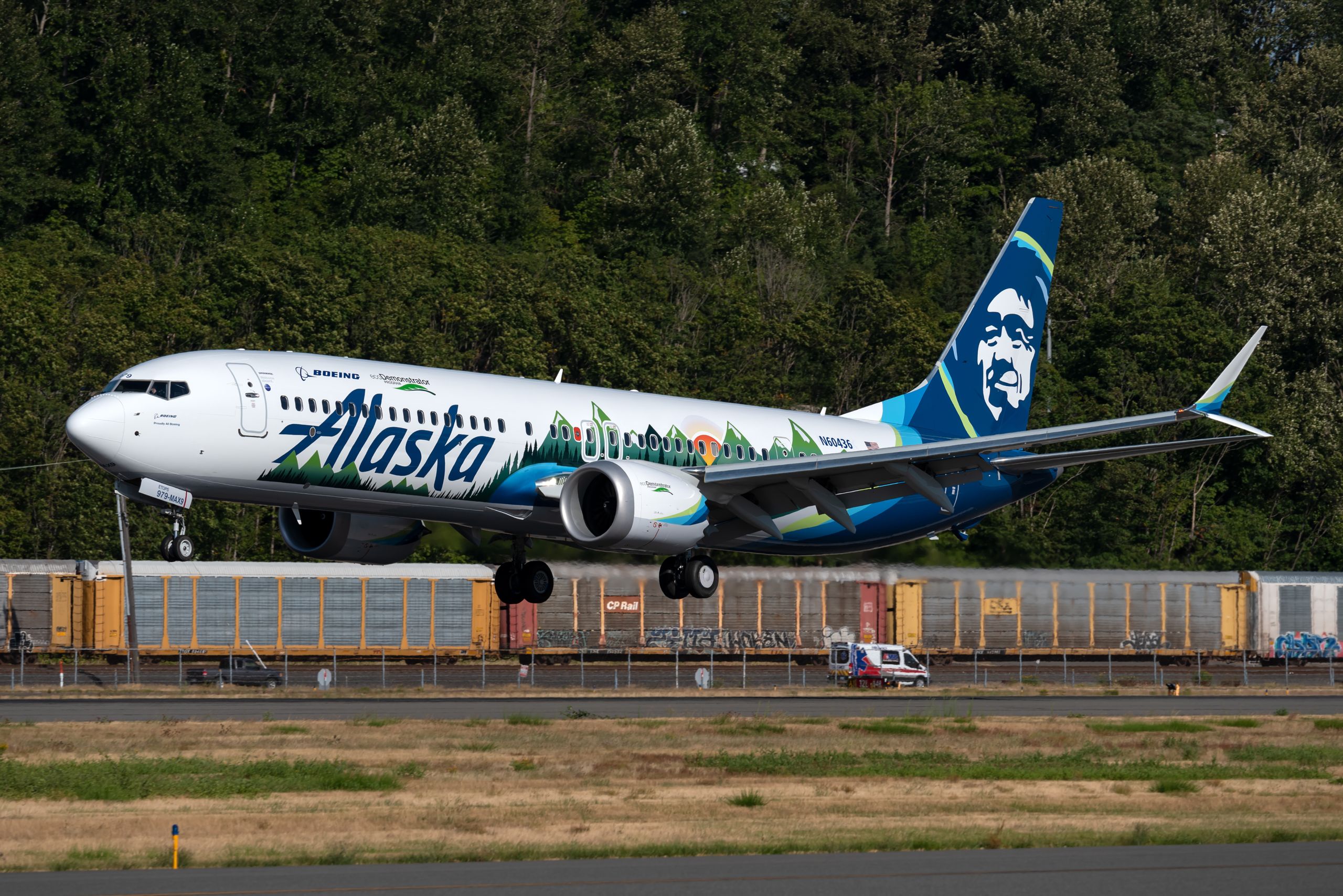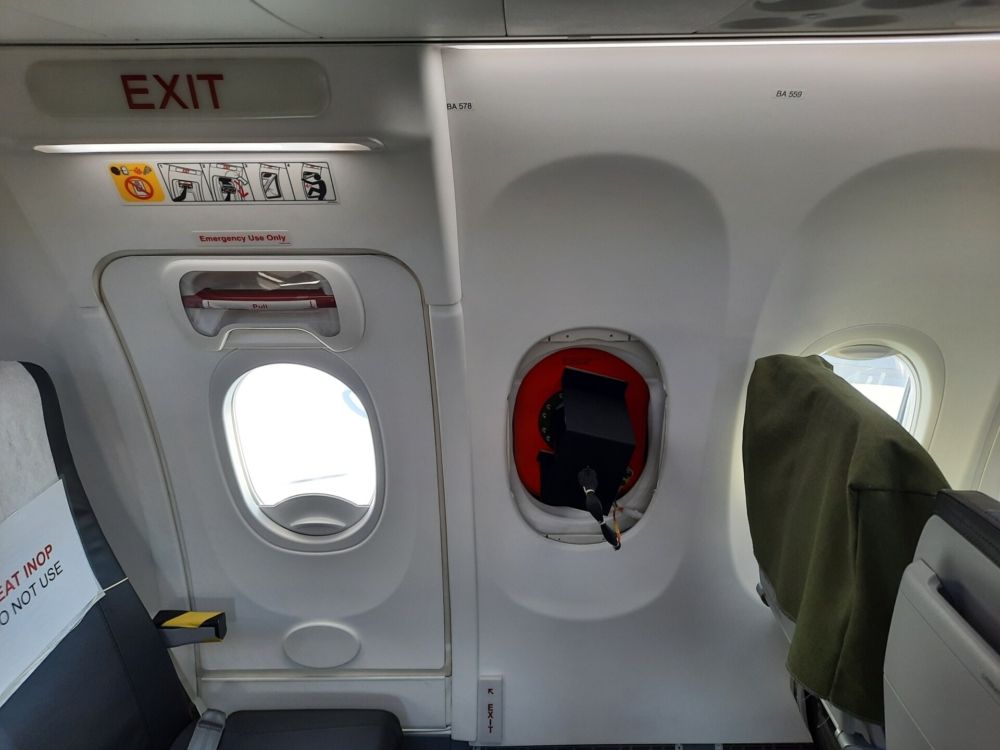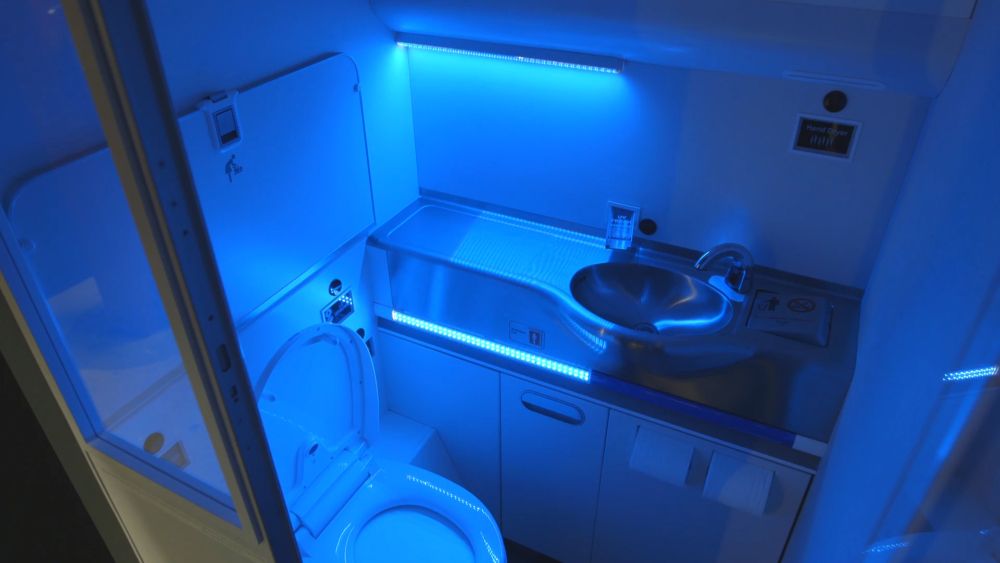The use of carbon composites in aircraft has allowed planemakers to build lighter, more efficient planes. But this material is not easily dealt with at the end of its life. To address waste and find a new purpose for these composite materials, Boeing is testing its use in aircraft sidewalls and more.
Testing carbon fiber panels on the ecoDemonstrator
Boeing’s latest ecoDemonstrator, an Alaska Airlines 737 MAX, is hard at work testing out a number of new technologies and modifications, many of which will inform future plane design at the firm. One of the items being tested out is a new type of sidewall, one which is made from recycled carbon fiber from Boeing’s production lines.
Simple Flying caught up with Chris Raymond, Boeing’s Chief Sustainability Officer, at the recent Dubai Air Show to find out more about this initiative. He told us,
“We have a sidewall panel on this airplane that is then made out of recycled carbon fiber from our triple seven and 787 production lines. We think it's got the potential to reduce weight on the airplane.”
The use of composite materials has significantly reduced the weight of modern aircraft like the 787 Dreamliner, so putting it to use in the passenger cabin is a logical choice. This also solves a major end of life problem for Boeing, as carbon composites are not easily disposed of. When it comes time for aircraft like the Dreamliner to retire, the large amounts of composites used in its construction could present an environmental nightmare.
Repurposing this material into other products would be a great way to recycle the carbon composite. But Boeing needs to know it can do as good a job in the cabin as its current products do. This is what’s being tested out on the ecoDemonstrator, as Raymond explained,
“What we're testing is whether it has the same acoustic characteristics and whether it can insulate the passenger from noise as well as the ones we make today. But if it does, we can then look to make sidewalls out of recycled material. The material is recyclable itself, so when the aircraft is broken up, that can be recovered and reused again.”
The materials on test on the Alaska 737 MAX are byproducts from Boeing’s 777X and Dreamliner production lines. It’s not the first time a second life has been trialed for these products though, as the 2019 ecoDemonstrator trialed a self-disinfecting lavatory with recycled carbon fiber floors.
Your next laptop could be made from a bit of a Dreamliner
Finding a soliton for recycling carbon composites is nothing new for Boeing. Since 2018, the company has partnered with a UK-based specialist recycler – ELG Carbon Fibre. Boeing supplies ELG with uncured carbon composites from its 777X wing manufacturing facility and Dreamliner production lines for use in secondary products.
The initial volume was expected to be around a million pounds a year of composite waste, but with the anticipation that this could double within five years. The recycling of these products is part of Boeing’s commitment to reducing the amount of waste sent to landfill by 20% by 2025. Raymond explained,
“When we use metal, aluminum and titanium, we know how to recycle that. But we didn't have that when we started the 787 or the triple seven composite wing. We had to create a way to do that. We worked with the UK company and found a way and now they turn those things into plastic bricks, essentially. And those bricks get used by other industries.”
Raymond added that it had recently been noted that Dell Computers buys products from ELG Carbon Fiber, to make its laptop cases. So the next time you fire up your laptop, if it’s made by Dell, you could be touching a bit of carbon fiber that was almost a part of a Dreamliner.




